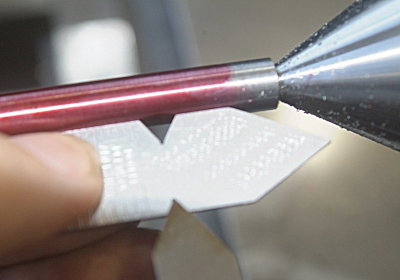- Joined
- Dec 14, 2007
- Messages
- 1,181
- Reaction score
- 31
Oh again! When advancing the compound at an angle, I can do the trigonometry to figure how far to advance it, but is there a simple formula or a chart with this info.
If you want to use the 29.5 deg. method and know the DOT, trig and charts are unnecesary;
1. Zero the compound
2. Move cutter to touch work with cross slide
3. Zero cross slide.
4. Back cross slide out DOT (taking backlash into consideration) a DRO really speeds things up.
5. move compound in to touch the work.
6. read compound dial. This is your depth to travel with the compound.
7. Have fun! ;D







